- Choosing the Right Poinsettia
- Understanding Poinsettia Light Requirements
- 1. Bright Indirect Light
- 2. Avoid Dark Corners
- 3. Rotate the Plant
- 4. Artificial Lighting
- 5. Light Duration
- Providing the Proper Amount of Water
- 1. Watering Frequency
- 2. Watering Technique
- 3. Use Room Temperature Water
- 4. Adjust Watering During Dormancy
- Maintaining Optimal Temperature and Humidity
- Temperature:
- Humidity:
- Monitoring and adjustments:
- Pruning Poinsettias for Healthy Growth
- When to Prune Poinsettias
- Tools Needed for Pruning
- Pruning Techniques
- Aftercare
- Fertilizing Poinsettias for Vibrant Blooms
- Choose the Right Fertilizer
- Timing is Everything
- Follow Proper Application Techniques
- Monitor Soil Moisture
- Consider Slow-Release Fertilizers
- Adjust Fertilizer Ratios for Specific Needs
- Dealing with Common Poinsettia Pests and Diseases
- Pests:
- Diseases:
- Prevention:
- Extending the Life of Poinsettias after the Holidays
- 1. Provide Adequate Light
- 2. Maintain a Consistent Temperature
- 3. Water Properly
- 4. Fertilize Occasionally
- 5. Prune and Pinch Back
- 6. Keep an Eye out for Pests
- 7. Consider Outdoor Planting
- 8. Enjoy the Color
- Q&A:
- How often should I water my poinsettia?
- Can I keep my poinsettia outside?
- How do I get my poinsettia to rebloom next year?
- How long do poinsettias usually last?
- What should I do if my poinsettia leaves are wilting?
- Can poinsettias be grown in pots?
- Video: What To Do With Poinsettias After Christmas? Houseplant Care Tips | how to prune, grow and bloom
When the holiday season arrives, many people turn to poinsettias as a festive and vibrant addition to their home decor. These beautiful plants, with their bright red or white bracts, can instantly brighten up any room. However, growing poinsettias at home can be a challenge if you don’t know the proper care techniques.
Expert Tip #1: Choose a location with bright, indirect light for your poinsettia. While they do need light to thrive, direct sunlight can cause the leaves to burn. Placing your plant near a north-facing window or providing filtered sunlight will ensure it receives the right amount of light.
Expert Tip #2: Maintain the right temperature for your poinsettia. These plants prefer temperatures between 60-70°F (15-21°C) during the day and around 55°F (13°C) at night. Avoid placing them near cold drafts or heat sources, as drastic temperature changes can harm the plant.
Expert Tip #3: Water your poinsettia properly to prevent root rot. Allow the soil to dry out slightly between waterings, but do not let it become completely dry. When watering, make sure to thoroughly soak the soil until water drains out from the bottom of the pot. Avoid letting the plant sit in standing water as it can lead to root rot.
Expert Tip #4: Fertilize your poinsettia regularly to promote healthy growth. Use a balanced, water-soluble fertilizer diluted to half strength once a month during the spring and summer months. Be careful not to over-fertilize, as it can lead to excessive foliage growth and fewer bracts.
By following these expert tips, you can ensure that your poinsettia thrives and brings joy to your home during the holiday season and beyond. With proper care and attention, these beautiful plants can be a long-lasting addition to your indoor garden.
“A well-cared-for poinsettia can maintain its colorful bracts for several months, making it a wonderful addition to any home during the holiday season and beyond.” – Poinsettia Expert
Choosing the Right Poinsettia
When selecting a poinsettia for your home, it’s important to choose a healthy plant that will thrive in your environment. Here are some tips for choosing the right poinsettia:
- Size: Consider the size of the space where you plan to display the poinsettia. Poinsettias come in various sizes, from small tabletop plants to large statement pieces. Choose a size that suits your needs.
- Color: Poinsettias are known for their vibrant red color, but they also come in other shades such as pink, white, and even marbled combinations. Select a color that complements your home’s decor and personal preference.
- Leaves: Examine the leaves of the poinsettia carefully. They should be dark green and free from blemishes or discoloration. Avoid plants with yellowing or drooping leaves, as they may indicate poor health.
- Buds and Bracts: Poinsettias have small buds surrounded by modified leaves called bracts, which give the plant its characteristic color. Choose a plant with plenty of unopened buds and vibrant bracts to ensure a long-lasting display.
- Stem: Check the stem of the poinsettia for firmness. A healthy stem should be sturdy and not easily bent or broken. Avoid plants with weak or brittle stems, as they may have underlying issues.
- Overall Health: Take a close look at the overall health of the plant. Avoid poinsettias with wilted or damaged stems, yellowing or dropping leaves, or signs of pests or diseases. Choose a plant that looks robust and well-cared for.
By following these tips, you can choose the right poinsettia that will bring colorful cheer to your home throughout the holiday season and beyond.
Understanding Poinsettia Light Requirements
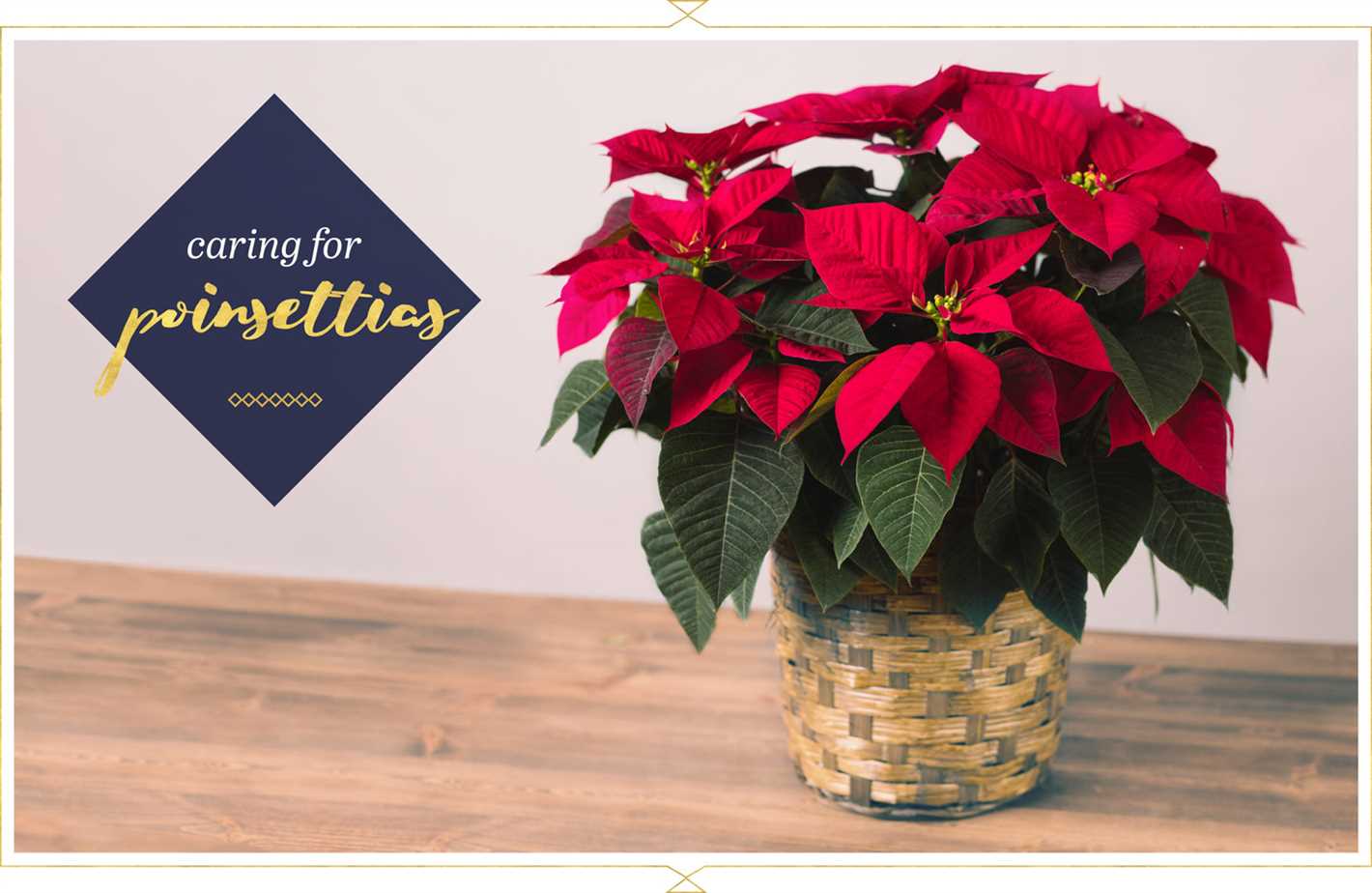
Poinsettias are tropical plants that require a specific amount of light in order to thrive. Understanding the light requirements of poinsettias is essential for successfully growing them at home. Here are some expert tips to help you provide the right amount of light for your poinsettias:
1. Bright Indirect Light
Poinsettias thrive in bright, indirect light conditions. Place them near a sunny window where they can receive at least 6 hours of bright, indirect sunlight a day. Avoid exposing them to direct sunlight, as it can damage the leaves and cause them to wilt.
2. Avoid Dark Corners
Avoid placing your poinsettias in dark corners or areas with low light levels. Insufficient light can cause the leaves to drop and the plant to become leggy and weak. Ensure the poinsettias are placed in a well-lit area to promote healthy growth.
3. Rotate the Plant
Poinsettias tend to lean towards the light source, which can result in uneven growth. To ensure even growth, rotate the plant every few days to expose all sides of the plant to the available light. This will help prevent the plant from leaning to one side.
4. Artificial Lighting
If you are unable to provide enough natural light for your poinsettias, you can supplement with artificial lighting. Use fluorescent lights or LED grow lights to provide the required amount of light for the plant. Place the lights close to the plant, but ensure they do not touch the leaves to prevent burning.
5. Light Duration
Poinsettias require a certain amount of darkness to trigger the production of their vibrant bracts. To induce color change, poinsettias need 12-14 hours of uninterrupted darkness each night for about 8-10 weeks. During the day, they should receive bright, indirect light as mentioned above.
By understanding and providing the right amount of light for your poinsettias, you can ensure that they will thrive and produce their iconic colorful bracts. Remember to regularly check the light conditions and adjust accordingly to provide the best environment for your poinsettias to flourish.
Providing the Proper Amount of Water
Watering is a crucial aspect of poinsettia care, as both overwatering and underwatering can lead to problems for the plant. It is important to provide the proper amount of water to ensure the poinsettia stays healthy and vibrant.
1. Watering Frequency
The frequency of watering depends on various factors such as room temperature, humidity, and the size of the plant. As a general rule, poinsettias should be watered when the top inch of soil feels dry to the touch.
It is best to avoid letting the plant sit in standing water, as this can cause root rot. Make sure to empty any excess water from saucers or trays to prevent waterlogging.
2. Watering Technique
When watering the poinsettia, it is important to water the soil evenly and thoroughly. This can be done by pouring water onto the soil until it begins to come out of the drainage holes at the bottom of the pot.
Avoid getting water on the leaves or bracts, as this can lead to diseases or fungal problems. If water does accidentally get on the leaves, gently wipe it off with a soft cloth.
3. Use Room Temperature Water
Poinsettias prefer room temperature water, so let tap water sit for a few hours before watering to allow it to reach room temperature. Cold water can shock the plant’s roots and cause stress.
4. Adjust Watering During Dormancy
During dormancy, which occurs after the holiday season, poinsettias require less water. Reduce watering frequency to once every 1-2 weeks, allowing the soil to dry out more between waterings.
Remember to monitor the moisture level of the soil regularly and adjust your watering schedule accordingly.
Maintaining Optimal Temperature and Humidity
Proper temperature and humidity levels are crucial for the health and growth of poinsettias. Here are some expert tips to help you maintain the optimal conditions:
Temperature:
- Poinsettias prefer a temperature range of 60-70°F (15-21°C) during the day.
- At night, the temperature should be slightly cooler, around 55-60°F (13-15°C).
- Avoid extreme temperature fluctuations, as they can stress the plants and lead to leaf drop.
Humidity:
Poinsettias thrive in humid environments, so it’s important to provide adequate moisture in the air.
- Keep the humidity level around 50-70%.
- Use a humidifier or place a tray filled with water near the poinsettias to increase humidity.
- Avoid placing the plants near drafts or heating vents, as they can cause the air to dry out.
Monitoring and adjustments:
Regularly monitor the temperature and humidity levels in the area where you have placed your poinsettias. You can use a thermometer and hygrometer to accurately measure these conditions.
If the temperature or humidity deviates from the optimal range, make the necessary adjustments. For example:
- If the temperature is too high, move the poinsettias to a cooler location or provide shade during the hottest part of the day.
- If the temperature is too low, consider using a heating mat or relocating the plants to a warmer area.
- If the humidity is too low, mist the poinsettias with water or use a room humidifier to increase moisture.
- If the humidity is too high, improve air circulation by opening windows or using a fan.
By maintaining optimal temperature and humidity levels, you can ensure that your poinsettias grow and flourish throughout the holiday season and beyond.
Pruning Poinsettias for Healthy Growth
Proper pruning is key to maintaining the health and beauty of your poinsettia plant. By removing dead or damaged branches, you can encourage new growth and ensure that your poinsettia remains vibrant throughout the season.
When to Prune Poinsettias

The best time to prune your poinsettia plant is in late winter or early spring, after the blooming period has ended. This allows the plant to recover and prepare for new growth. Avoid pruning during the holiday season or when the plant is actively blooming, as this can cause stress and hinder its ability to produce colorful bracts.
Tools Needed for Pruning
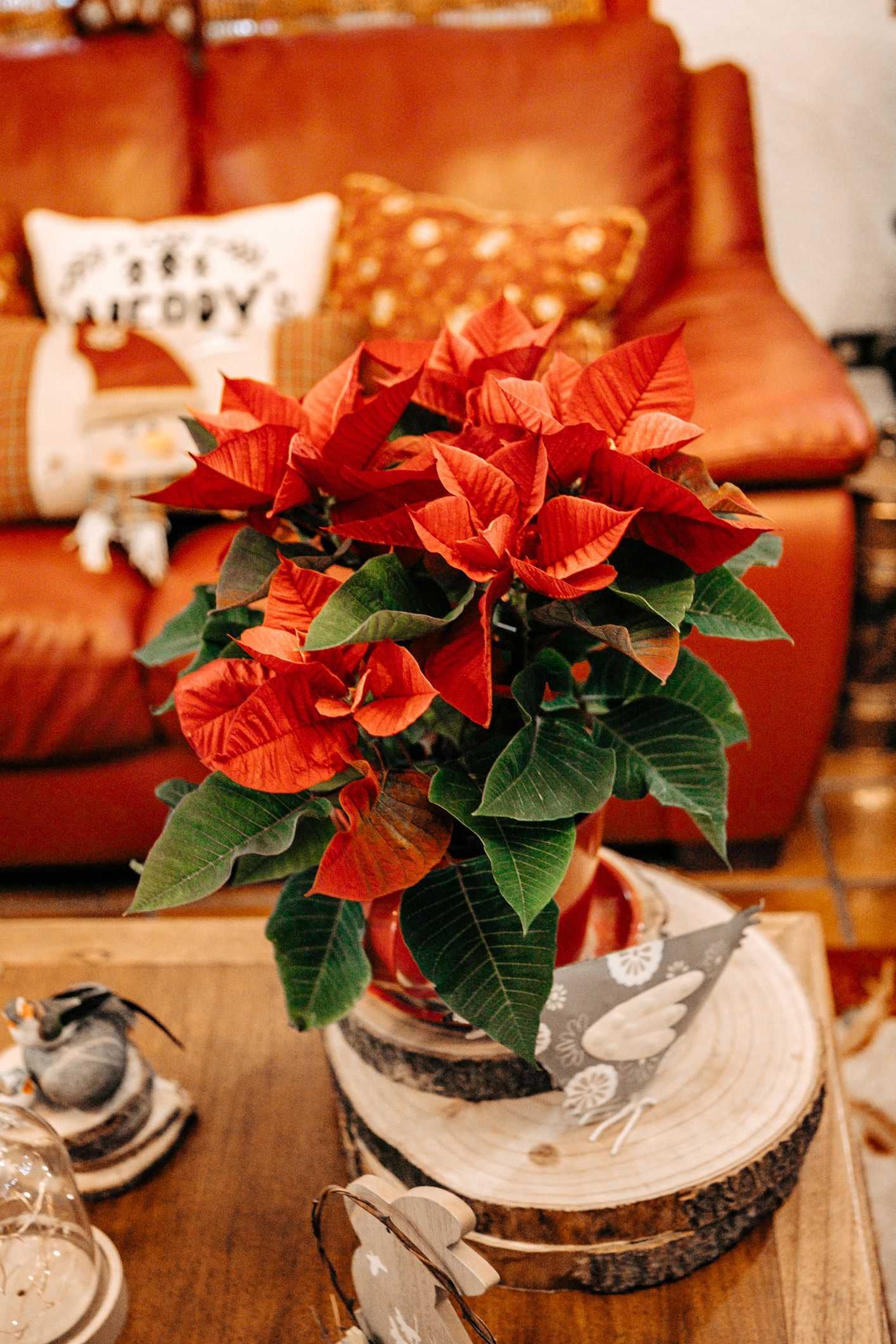
To properly prune your poinsettia, you will need a pair of clean, sharp pruning shears or scissors. It is important to use clean tools to prevent the spread of disease or pests. You may also want to have a pair of gloves to protect your hands from the milky sap that poinsettias produce, which can cause skin irritation.
Pruning Techniques
Start by inspecting the plant for dead or damaged branches. These branches should be pruned back to the main stem or a healthy bud. Make clean cuts at a slight angle to promote healing.
Next, you can also prune for shape and size. If your poinsettia has become too large or leggy, you can trim back the branches to maintain a more compact form. However, be careful not to remove too much foliage, as this can stress the plant and affect its ability to produce bracts in the future.
Aftercare
After pruning, it is important to provide proper care for your poinsettia. Place the plant in a location with bright, indirect light and maintain a consistent temperature between 60-70°F (15-21°C). Water the plant when the top inch of soil feels dry, being careful not to overwater. You can also fertilize your poinsettia with a balanced, water-soluble fertilizer every 2-4 weeks, following the manufacturer’s instructions.
With regular pruning and proper care, your poinsettia will continue to thrive and provide a colorful display for many seasons to come.
Fertilizing Poinsettias for Vibrant Blooms
When it comes to poinsettia care, proper fertilization is key to ensuring vibrant blooms and healthy plants. Here are some expert tips for fertilizing your poinsettias:
Choose the Right Fertilizer
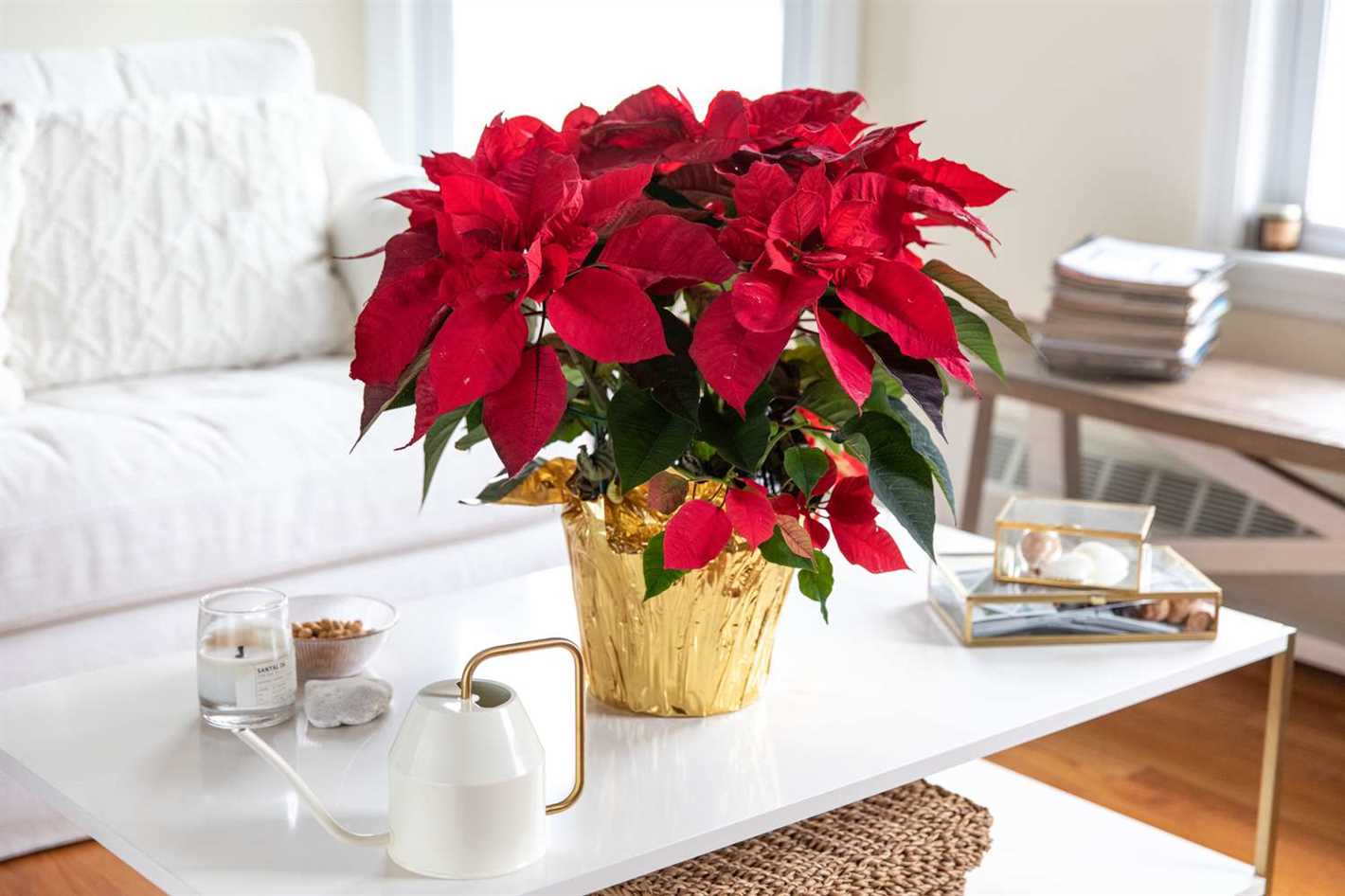
When selecting a fertilizer for your poinsettias, it’s important to choose one that is specifically formulated for flowering plants. Look for a balanced fertilizer with equal amounts of nitrogen, phosphorus, and potassium (N-P-K). Additionally, make sure the fertilizer contains micronutrients such as iron, manganese, and zinc, as these are essential for poinsettia growth.
Timing is Everything
Fertilize your poinsettias every two weeks during the active growth phase, which typically occurs from spring through summer. This will provide the necessary nutrients for healthy leaf and flower development. Avoid fertilizing poinsettias during their dormant period, which usually begins in the fall.
Follow Proper Application Techniques
When applying fertilizer, dilute it to half the recommended strength to avoid over-fertilizing, which can damage the plant. Use a watering can with a long spout to apply the diluted fertilizer to the soil around the base of the plant. Avoid getting any fertilizer on the leaves, as this can cause leaf burn.
Monitor Soil Moisture
Poinsettias prefer to be kept evenly moist, so monitor the soil moisture levels throughout the growing season. If the soil becomes dry between waterings, it may indicate a need for more frequent fertilization. However, be careful not to overwater, as this can lead to root rot and other issues.
Consider Slow-Release Fertilizers
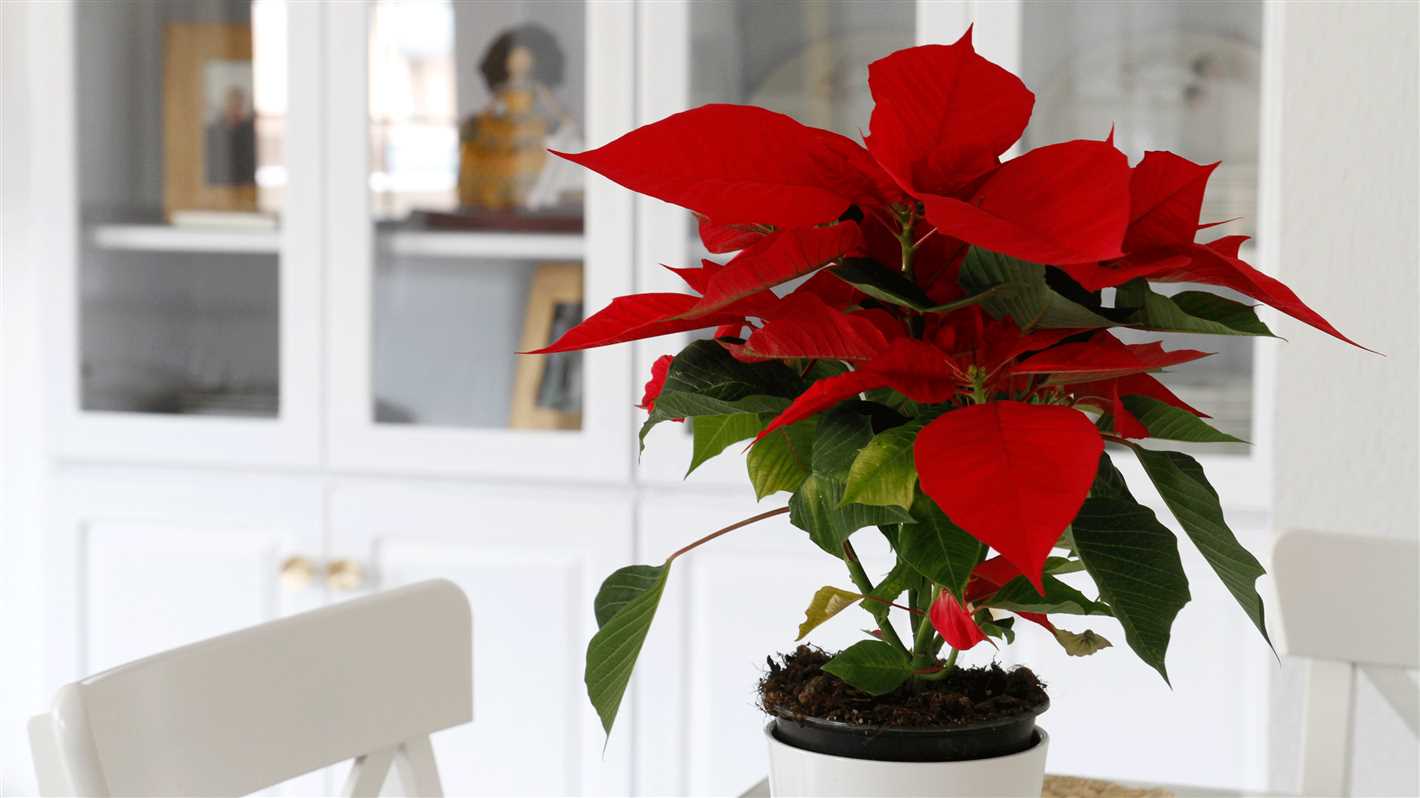
If you prefer a hands-off approach to fertilization, consider using slow-release fertilizers. These granules are mixed into the soil or applied to the surface and release nutrients gradually over time. This can help ensure a steady supply of nutrients without the need for frequent applications.
Adjust Fertilizer Ratios for Specific Needs
In some cases, you may need to adjust the fertilizer ratios based on the specific needs of your poinsettias. For example, if you notice excessive leaf growth and minimal flower production, reduce the nitrogen content of the fertilizer. On the other hand, if your poinsettias have weak stems and pale leaves, increase the nitrogen content to promote stronger growth.
By following these fertilization tips, you can help your poinsettias thrive and achieve vibrant blooms throughout the holiday season and beyond.
Dealing with Common Poinsettia Pests and Diseases
Poinsettias are susceptible to a few common pests and diseases that can affect their overall health and appearance. Here are some tips for identifying and treating these issues to keep your poinsettias thriving:
Pests:
- Whiteflies: These tiny, white insects can be found on the underside of the poinsettia leaves. A strong blast of water from a hose can help dislodge them. In severe cases, you may need to use an insecticidal soap or oil spray to eliminate the infestation.
- Aphids: These small insects may appear on the new growth of poinsettias and can cause distortion or curling of the leaves. Use a neem oil spray or insecticidal soap to control aphids.
- Spider mites: These pests can be difficult to see with the naked eye, but you may notice thin webbing on the leaves. Spray the plant with water to increase humidity and use an insecticidal soap or miticide to control spider mites.
Diseases:
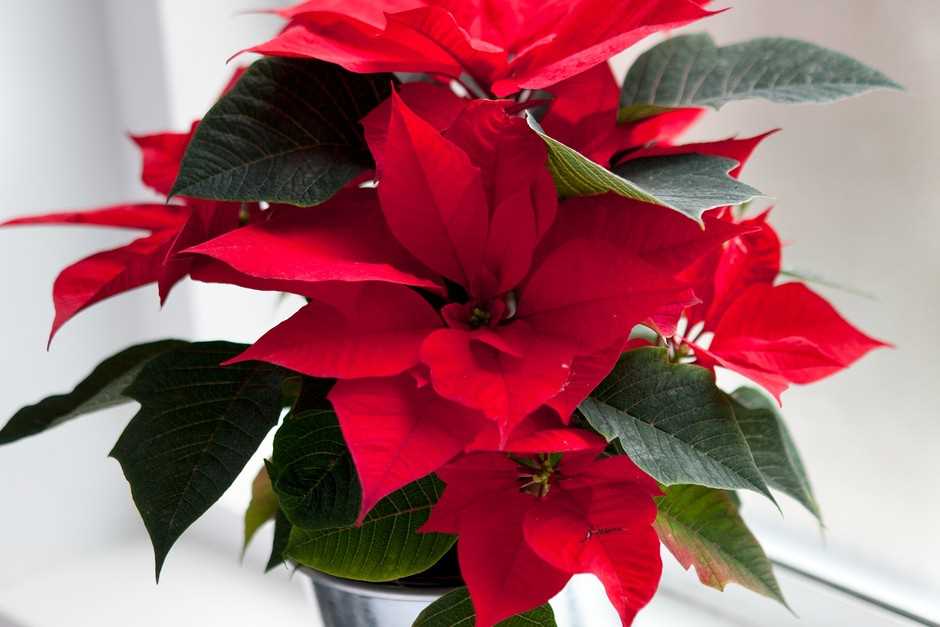
- Root rot: Overwatering can lead to root rot, which causes the roots to decay. Prevent this by ensuring that the poinsettia’s pot has proper drainage and only water when the top inch of soil feels dry.
- Botrytis blight: This fungal disease causes grayish mold to form on the leaves, stems, and flowers of poinsettias. Improve air circulation around the plant and avoid overhead watering to prevent botrytis blight. If the disease is already present, remove affected plant parts and apply a fungicide.
- Powdery mildew: Powdery white spots on the leaves indicate a powdery mildew infection. Increase air circulation and avoid overhead watering to prevent powdery mildew. If necessary, treat with a fungicide.
Prevention:
While it’s important to address pests and diseases as soon as they appear, prevention is key to keeping your poinsettias healthy. Here are some preventive measures you can take:
- Inspect new plants: Before bringing a new poinsettia plant home, examine it for any signs of pests or diseases. Quarantine the plant if necessary before placing it near other plants.
- Maintain good hygiene: Clean up fallen leaves and debris around poinsettias to prevent pests and diseases from breeding or spreading.
- Avoid overfertilizing: Excessive fertilizer can weaken poinsettias and make them more susceptible to pests and diseases. Follow the recommended fertilizer instructions for your specific variety.
- Provide optimal conditions: Poinsettias prefer bright indirect light, temperatures between 65-75°F (18-24°C), and moderate humidity. Avoid placing them near drafts or heat sources.
By following these tips, you can help your poinsettias stay healthy and free from common pests and diseases, ensuring a vibrant display during the holiday season and beyond.
Extending the Life of Poinsettias after the Holidays
Once the holiday season comes to an end, many people find themselves wondering what to do with their poinsettias. Fortunately, with a little care and attention, you can extend the life of your poinsettias and enjoy their beauty for months to come. Here are some expert tips for keeping your poinsettias thriving long after the holidays:
1. Provide Adequate Light
Poinsettias are native to Mexico and require plenty of sunlight to thrive. Place your poinsettias in a location where they will receive at least six hours of bright, indirect light each day. Avoid placing them near cold drafts or heating vents, as extreme temperatures can damage the plants.
2. Maintain a Consistent Temperature
Poinsettias prefer temperatures between 60-70°F (15-21°C). Keep them away from drafts and sudden temperature changes, as these can cause stress to the plants. Avoid placing them in overly warm or cold areas, such as near windows or exterior doors.
3. Water Properly
Proper watering is essential for the health of poinsettias. Check the soil regularly and water when the top inch feels dry to the touch. Be careful not to overwater, as this can lead to root rot. Avoid allowing the plant to sit in standing water, as this can also cause damage.
4. Fertilize Occasionally
During the months following the holidays, you can fertilize your poinsettias every 4-6 weeks with a balanced, water-soluble fertilizer. Follow the instructions on the fertilizer packaging for best results. Avoid over-fertilizing, as this can lead to excessive growth and weak plants.
5. Prune and Pinch Back
To encourage bushier growth, you can prune or pinch back your poinsettias after they finish blooming. Cut back each stem to about 4-6 inches in length, leaving at least two to three leaves on each branch. This will help promote new growth and prevent the plant from becoming leggy.
6. Keep an Eye out for Pests
Poinsettias can be susceptible to pests such as whiteflies, aphids, and spider mites. Inspect your plants regularly and treat any infestations promptly. There are various organic and chemical options available for controlling pests on poinsettias.
7. Consider Outdoor Planting
If you live in a warm climate, you may choose to transplant your poinsettias outdoors once the danger of frost has passed. Poinsettias can be grown as perennials in USDA hardiness zones 9-11. Choose a sunny location with well-draining soil and provide regular watering and fertilization.
8. Enjoy the Color
Lastly, remember to simply enjoy the vibrant colors of your poinsettias for as long as possible. With the right care, your poinsettias can continue to bring beauty and holiday cheer long after the season has ended.
By following these expert tips, you can extend the life of your poinsettias and enjoy their beauty well into the new year. With proper care, these iconic holiday plants can continue to enhance your home and bring joy throughout the winter months.
Q&A:
How often should I water my poinsettia?
Poinsettias should be watered when the top inch of soil feels dry to the touch. It’s important not to overwater them, as this can lead to root rot. It’s generally recommended to water them thoroughly and then let the excess water drain out of the pot.
Can I keep my poinsettia outside?
Poinsettias are native to tropical regions, so they prefer warm temperatures between 60 and 70 degrees Fahrenheit. They are not frost tolerant, so if you live in a colder climate, it’s best to keep them indoors. However, they can be placed outside in a shaded area during the summer months.
How do I get my poinsettia to rebloom next year?
In order to get your poinsettia to rebloom, you’ll need to provide it with the right conditions. About 10 weeks before you want it to bloom again, you’ll need to expose it to 14 hours of complete darkness each night. This can be done by placing it in a dark room or covering it with a box or bag. During the day, it should be placed in a well-lit area. Additionally, make sure to provide it with regular watering and fertilization.
How long do poinsettias usually last?
When properly cared for, poinsettias can last for several weeks or even months. Their colorful bracts may start to fade after a while, but the plant itself can continue to grow and thrive if given the right conditions. With proper care, it’s possible for poinsettias to last through the holiday season and beyond.
What should I do if my poinsettia leaves are wilting?
If your poinsettia leaves are wilting, it’s usually a sign of underwatering. Make sure to check the moisture level of the soil and water the plant if it feels dry. However, be careful not to overwater it either, as this can lead to root rot. It’s best to water the plant thoroughly and let the excess water drain out of the pot.
Can poinsettias be grown in pots?
Yes, poinsettias can be grown in pots. In fact, they are commonly sold as potted plants during the holiday season. When planting a poinsettia in a pot, make sure to choose one with drainage holes to prevent overwatering. It’s also a good idea to use a well-draining potting soil and to provide the plant with regular watering and fertilization.
Video:
What To Do With Poinsettias After Christmas? Houseplant Care Tips | how to prune, grow and bloom







